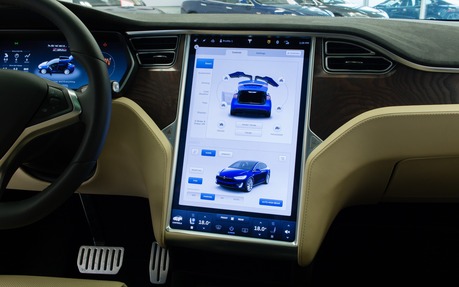The Infotainment System: A Brief History
Look inside a modern car and you can’t miss the gigantic screen in the middle of the dashboard. But did you know that the origins of the infotainment system can be traced a long way back?
In 1930, for $130 (about $1,700 in today’s dollars) drivers could obtain a small Motorola AM radio receiver. It was so big that it had to be screwed into the car floor and controlled by a command stuck to the dashboard.
- Also: Multimedia Headaches
- Also: A Big iPad in Your Face
The first car equipped with a factory-standard radio was a 1933 Crossley (not to be confused with Crosley, another manufacturer from the same era). Beginning in 1964, Ford partnered with Motorola to offer an eight-track player in its vehicles. This technology was progressively replaced by cassette players and, by the end of the 1980s, CD players. The first car equipped factory standard with a CD player was the 1987 Lincoln Town Car.
A year earlier saw the advent of the first touch screen. Rather than control everything with buttons, 1986 Buick Riviera owners could control their radio by tapping directly on the screen.
The beginning of the 2000s was saw the arrival of a multitude of new technologies, including Bluetooth to help us connect our mobile phones to make hands-free calls, satellite radio to give us access to a wide array of music, and navigation to make getting lost a thing of the past. Now most of the vehicle’s controls—like air conditioning, the radio and the telephone—can be accessed using the central screen and certain automakers are even starting to offer Wi-Fi directly on board.
